NRL 2021: Stats from NRL show players are no more fatigued than when they were back in 2019
Peter V’landys and the NRL are standing firm on their interpretation of key football and fatigue-related indicators. But an upset players’ union sees their stance disrespectful to players.
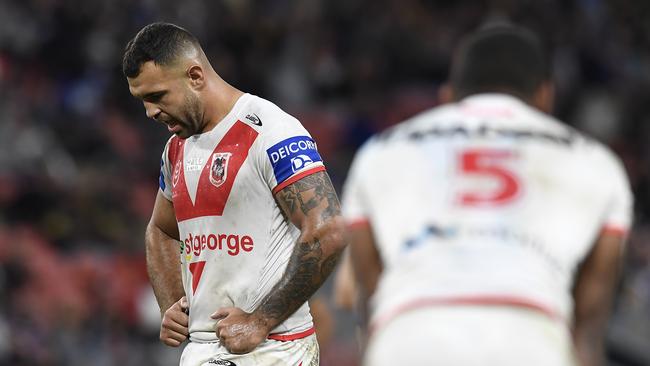
NRL
Don't miss out on the headlines from NRL. Followed categories will be added to My News.
NRL stars are in a war of words with the game’s most powerful man Peter V’landys over the future direction of how the game of rugby league should be played.
It comes after the Rugby League Players Association fired out a media release late on Thursday accusing the governing body of a lack of “awareness and respect for those playing the game”.
As the controversy surrounding the crackdown on high tackles that led to more send offs and sin bins during last weekend’s Magic Round rumbles on, the RLPA took exception to an NRL media release which contained data highlighting key indicators that there was no evidence to support the “perception the players have never been more fatigued”.
But V’landys was adamant: “I think they have misread the press release. There was no disrespect to the players.
Watch The 2021 NRL Telstra Premiership Live & On-Demand with No Ad-Breaks During Play. New to Kayo? Try 14-Days Free Now >
“It was basically balancing the argument with some information. That is all it attempted to do.
“No one respects the players more than the NRL do.
“And if you read it carefully I can’t see how they have made that interpretation.”
The NRL’s media release stated that the data related to “key football and fatigue related indicators in the game and corrects some misconceptions about the changes in the game over the last two years.”
It showed that statistics across the board from average error rates to play the balls, stoppage times and distance covered by players in games that had hardly changed since 2019, before the six again rule was implemented.
But the paragraph in the media release that seemed to upset the RLPA read in full: “While there’s a perception the players have never been more fatigued, the data simply does not support that assertion.”

The RLPA responded: “While it may not have been the intention, dismissing the feelings and experiences of players as ‘perception’ in this statement lacks awareness and respect for those playing the game.
“The need for transparency has never been more important and the RLPA will request further data from the NRL and Clubs before confirming our position and making any recommendations for change.”
It’s fair to say V’landys was baffled by their response.
“If you read what they are arguing about, I can’t read that into it,” V’landys added.
“But I can guarantee there was absolutely no intention to disrespect the players, that’s for sure.
“I think they are being a bit pedantic with some of the wording.
“If you read it carefully it doesn’t actually have a crack at the players, it has a crack at other people’s perceptions.
“But you have to put the facts out there. You have to make sure people understand. People are saying players are committing more errors. Well, they are not. That is all it is trying to sure.”
NRL head of football Graham Annesley had earlier told The Daily Telegraph: “The reason we’ve put this out is to just to try and put some balance into the public about fatigue.
“There is a school of thought out there that fatigue is causing the spate of high tackles, and what we are trying to say is that let’s look at it from a data point of view.
“While we had a lot of high tackles and charges last week, and we hope that that is not going to continue, but just to make a bland assessment that fatigue is the reason this is happening … people are entitled to an opinion on that, but let’s put some balance into the debate by looking at the facts.
“And the facts show that things have largely been pretty static over the last three years. So what we are seeing now in terms of the speed of the game and so-forth is not terribly different to what we have seen over the last few years.
“Of course people are relating that so-called fatigue to the new rules, and the stats are showing that while we will look at all these things at the end of the year, the new rules haven’t made a massive difference to the way the game is played.”
Annesley pointed to the example relating to errors with the average only jumping by an average of one in the last three years from 21 to 22.
“Now you would think that if players are fatigued then they are going to make more mistakes,” he continued.
“And errors really haven’t changed. But every time you get a stoppage of course it extends the length of the game.
“But the longer the games goes the more breaks players are getting, because you still only play for 80 minutes.
“If it takes longer to play those 80 minutes it means players are getting more breaks.”
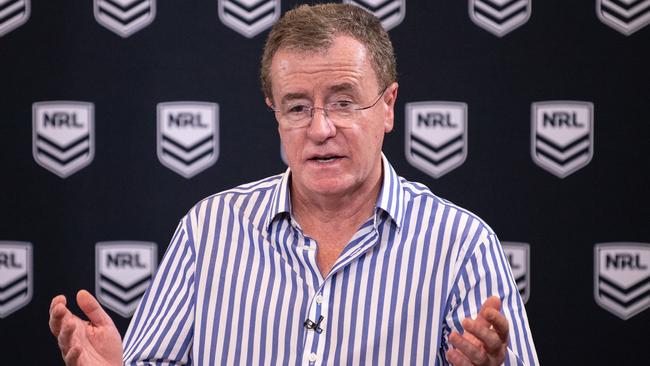
That data highlights the following matters:
– While there’s a perception the players have never been more fatigued, the data simply does not support that assertion.
– Players who are fatigued are more likely to make errors – yet the error rate over the last three years has remained flat. The error rate today is almost the same as the error rate before the new rule changes.
– Players are running about 500m less per game this season than last season and consistent with the number of metres run in 2019.
– There’s now 7.7 tries per game compared to just over 6.6 in 2019. That means the players are getting more stoppages for tries this year than previous years. The increase in tries coincides with players running faster from tackle breaks and in open play. The average distance covered at more than 20km per hour has risen from 255m per game in 2019 to 299m per game in 2021. Player speeds at more than 25km have risen moderately from 47m to 53m over the same period.

– Fatigue does not appear to be impacting on field performances or decision making. Players aren’t making more errors, they are not running more metres and they are getting more breaks because there are more tries.
“We will continue to meticulously monitor the data and if there is a negative trend we will address it. Player welfare is our absolute priority and if there were any signs that fatigue was having a negative impact, we would act immediately,” the statement concluded.
Don’t blame new rules: V’landys explains blowout scores
– Phil Rothfield
A combination of poor roster management and rule changes designed to make rugby league a faster and more free-flowing game have created the most number of blowout scorelines in 86 years.
An analysis of the first 10 rounds of a lopsided NRL competition reveals the average winning margin this season has blown out to 17.9 points, the most since way back in 1935 when it was 20.3 points.
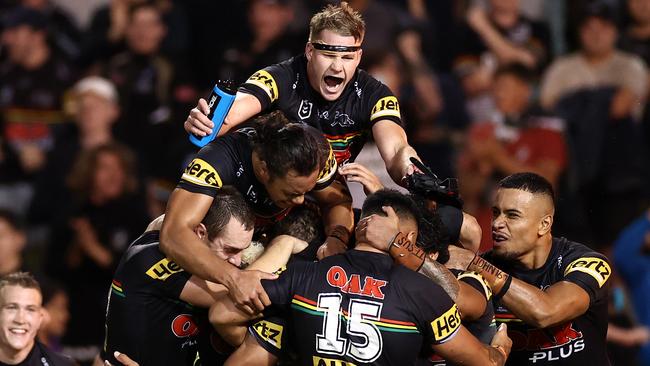
That was Canterbury’s first year in the competition when they were beaten 91-6 by St George in Round 5 and 87-7 in Round 6 by Eastern Suburbs.
(The value of tries was only three points in those days and increased to four in 1983.)
The gulf between the top and bottom sides has never been more evident in a game which Manly Sea Eagles skipper Daly Cherry-Evans now describes as “hybrid touch-OzTag.”
Six of the eight games in Magic Round last weekend had 13-plus winning margins.
Melbourne Storm scored 40 points for the sixth time in seven games.
Of the 80 games played this year, 47 (58 per cent) have had 13-plus blowouts.
The Penrith Panthers have a +236 points differential after 10 rounds, which is the second best of all time. Only the Roosters’ +247 in 1935 is better.
There has been a 12 per cent increase this year in games decided by 19-plus compared to last year, and a 9 per cent decrease in games decided by 0-6 points.
It is a significant problem for the NRL because ARL Commission chairman Peter V’landys and chief executive Andrew Abdo are in talks with free-to-air broadcasters for a new television deal.
The blowouts have an obvious detrimental effect on ratings.
The other concern for the NRL is expansion plans for a 17th team out of Brisbane and the possibility of having another club potentially incapable of matching it with the premiership heavyweights.
There are already question marks around having enough quality players for 16 teams, let alone one more.
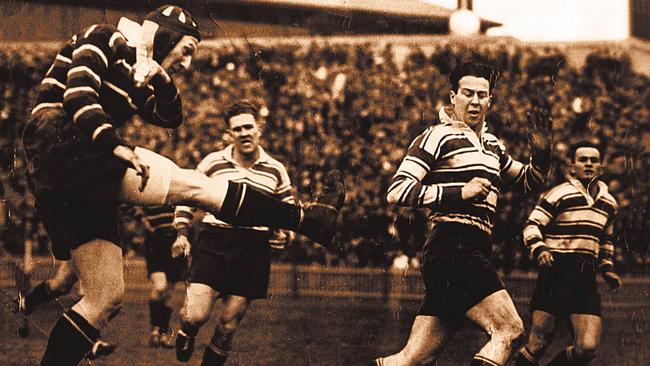
V’landys, however, refuses to accept the lopsided score lines are the result of rule changes.
“You can’t say the blowouts are due to the new rules,” V’landys said.
“It’s more about the roster management around the clubs. That’s got to improve.
“We’re not like the AFL with their variable distributions to the clubs. In our game every club gets the same amount of money. It’s how you spend that money to get the best outcomes.
“Success is in your own hands. If I was a club CEO I’d do a case study on Penrith and Storm. Storm is quite remarkable. They’ve got no juniors, it’s just great roster management.”
Cherry Evans however didn’t hold back.
“They wanted more points in the game and they wanted more fatigue,” he told Nine Newspapers, “I don’t think they quite understood it was going to be very one-sided.
“They got what they wanted in the fatigue and hybrid touch-OzTag. That’s what it is. I don’t care what anyone says.”
It is hard to believe all 16 clubs spend the same amount on players.
Former champion halves Brett Kimmorley and Greg Alexander are not just blaming the new rules for such an uneven competition.
“There’s a huge class difference when the top sides play the bottom ones,” Kimmorley said.
“The sides with the best 1, 6, 7 and 9s are the ones dominating.
“If you don’t have them you struggle to build pressure and execute plays.
“The good sides don’t just do hit ups and block runs, they play footy continuously.
“The sides down the bottom are slow, don’t pass the ball too often and lack skill.”
He actually prefers the game under the rule changes.
“We’ve definitely got a top tier and a bottom tier in the competition unfortunately,” he said, “but I wasn’t a fan of the suffocating game we had before the changes.
I’m a big fan of more fatigue, the six to go rule, eyes up football, a lot of ad lib.
“There’s five teams doing it much better than the others. I don’t agree that it’s too fast and becoming touch football.”
Alexander says the onus is on the bottom clubs to get their acts together.
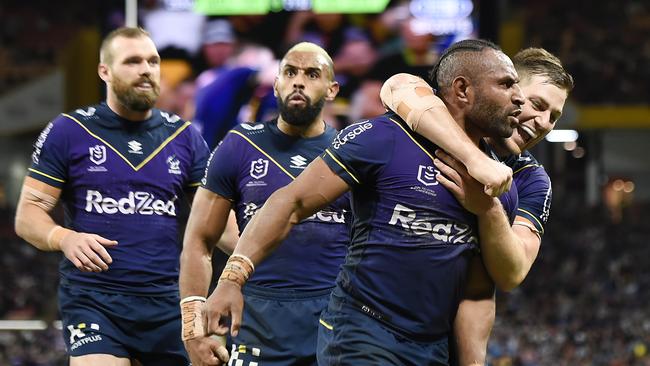
“It’s a bit of everything,” he said of the blowouts, “the class gap, the injuries, the new rules, the speed. But even Melbourne beat Souths by 50, although Souths had a lot of players out.
“The bottom sides have got to do better. Come up with a good plan, recruit and develop players well, and show a bit of patience.
“You’re not going to fix this overnight. You can’t just buy a team. It takes time. You need stability.
“Put the right people in place and have the right plan. Eventually they’ll get there.”
The Parramatta Eels are a great example for the need for stability.
They ran last in 2018 but stuck solid by coach Brad Arthur, implemented a full review of their football operations and have been strong ever since.
Alexander says the game should consider having more flexibility around the draw.
“I know other sports do it 12 months in advance but it’s not good if you’re not getting good contests in the important timeslots,” he said, “Look at Brisbane. They’re still on prime time and getting flogged each week.”
More Coverage
Originally published as NRL 2021: Stats from NRL show players are no more fatigued than when they were back in 2019





